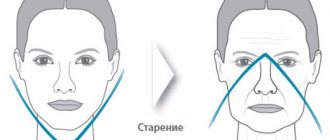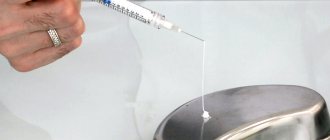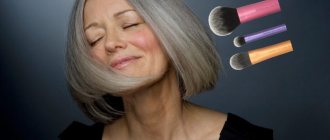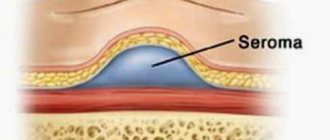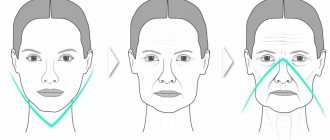We are talking with dermatocosmetologist, surgeon, candidate of medical sciences, certified trainer in injection techniques, founder of an independent training school Natalia Shkolyar and cosmetologist, scientific consultant of the 1nep.ru portal Ekaterina Glagoleva .
Advertising happily assures us: both mesothreads and fillers successfully fight wrinkles, strengthen the skin framework, and provide a lifting effect (it is the last promise that attracts consumers the most). However, according to Natalya Shkolyar, it is completely wrong to identify their actions.
- The action of fillers is aimed at increasing volume: with their help, you can restore the youthful roundness of the cheeks and cheekbones, and even out the oval of the face. And fill the defects of the dermis - wrinkles and folds.
- With the help of mesothreads lying freely in the skin, a kind of bioreinforcement occurs. A needle with an attached thread is passed through the subcutaneous layer along certain vectors, after which it is removed, but the thread remains, and when absorbed, a collagen “framework” is formed around it.
There is a real confrontation between fillers and threads. In the heat of competition, they are ascribed advantages that are far from reality. Both methods are surrounded by many myths. In such a situation, it is very difficult for the consumer to make the right choice!
MYTH 1: The introduction of mesothreads and fillers rejuvenates the skin.
According to Natalya Shkolyar , this is one of the most dangerous misconceptions that most aesthetic medicine specialists are trying to introduce into our consciousness. Alas, no biological rejuvenation of the skin occurs. From the point of view of medicine in general and surgery in particular, the desired lifting effect is based on trauma to the soft tissues of the face, without visible marks on the skin. And recovery follows the principle of wound healing. When threads and fillers are introduced, the skin is damaged, soft elastic “micro-scars” appear inside, which contribute to a change in its optical density. As a result, the patient sees in the mirror that he begins to look younger.
In fact, the biological process of skin aging does not slow down, and sometimes accelerates (if an inexperienced specialist violates the administration technique or the patient does not follow the doctor’s recommendations).
Nowadays, all forced “rejuvenating” manipulations are increasingly presented as improving a person’s health. This does not add respect to people who mislead patients.
Ekaterina Glagoleva:
“As such, true skin rejuvenation does not occur when implanting threads made of smooth suture material. As soon as the technique appeared, many manufacturers assured that a thread of smooth suture material was placed in the middle layers of the skin and, due to the constant irritating effect, collagen synthesis processes were started. At the moment, the term “subdermal introduction of mesothreads” is increasingly heard, namely they are located in the hypodermis (subcutaneous fatty tissue), and we are no longer talking about synthetic processes of the dermal matrix.
Fillers based on hyaluronic acid have recently followed the path of evolution and combine stabilized acid to recreate volumes and unstabilized hyaluronic acid, which acts as a biorevitalizant. In this case, I rather began to talk about skin rejuvenation.”
Lifting or plastic surgery - which is more economically profitable?
The cost of any procedure (for example, we mean a facelift with threads in Moscow) is determined by the complexity of the intervention, the price of consumables, the amount of work, the experience and qualifications of specialists.
How much does a thread lift cost today?
The price of a facelift with threads is based on the initial consultation with a doctor; carrying out the necessary examinations, taking tests; categories of clinic and doctor’s qualifications; the type and quantity of facial threads used (the cost of threads for implantation into facial tissue varies widely); volume of work - the area of the skin area that is being corrected. Specialists most often work with aptos threads (the most popular variety). The cost of a range of services is from 30 thousand rubles.
Cost of facial plastic surgery
The price of plastic surgery includes: initial consultation with a doctor; taking the necessary tests and conducting examinations; category of the clinic and degree of qualification of the surgeon; cost of consumables; volume of surgical intervention; volume of manipulation - the area of skin that is subject to correction; anesthesiologist's work and anesthesia costs; work of auxiliary medical personnel; the complexity of the intervention performed, taking into account all possible risks. The plastic method of age-related correction of changes is more complex, complex, and therefore the cost of facial plastic surgery is higher - from 150 thousand rubles.
MYTH 2: Compared to fillers, mesothreads provide a greater skin tightening effect.
Natalya Shkolyar's opinion:
“To some extent this is true. When fillers are injected, the skin is smoothed by filling the volume lost with age, which at the same time contributes to its “tension”. With biorevitalization (point injection of gel), the skin also slightly lifts. Smooth absorbable mesothreads reinforce the fabric. Introduced into the skin, they create a kind of mesh in it, around which, when absorbed, collagen and elastin fibers, which have become chaotic and stretched with age, “twist”. They reduce their length, and the patient feels the skin tightens and becomes more elastic. However, this lifting effect is not very great by and large. The skin only “sits” slightly. Mesothreads have no effect on subcutaneous structures—fatty tissue and muscles that have shifted downward (the main cause of age-related ptosis). For these purposes, non-absorbable and absorbable deep insertion sutures (smooth or notched) are used, which are attached to bone structures.”
Ekaterina Glagoleva:
“The skin tightening effect is provided by threads that can be classified as lifting and reinforcing - these are notched threads that are fixed in the tissue and provide true lifting.
Smooth threads provide an indirect lifting effect by creating a frame in the subcutaneous fat and tightening the tissue at the injection sites.”
What is mesothread
Implantation of mesothreads, or thread lifting, is carried out to tighten the skin.
The threads are inserted under the skin and form a frame that fixes the tissue, stimulating the production of elastin and collagen, from which a new frame is subsequently created.
The technique was created in South Korea, taking into account local specifics. Many European cosmetics are not suitable for the sensitive skin of Asians. Threadlifting turned out to be a real godsend.
During the procedure, a thin guide needle made of medical steel with laser sharpening or a cannula with a blunt end is used. The rounded end gently moves the tissue apart, making the procedure almost atraumatic.
Each type of mesothread has its own area of application:
- linear - a universal material for tightening the oval of the face, reinforcing the area of the cheeks, forehead, buttocks, abdomen, smoothing out small wrinkles;
- spiral (SCREW) - for the eyebrow area, nasolabial fold, collar area, décolleté;
- “braids” made of intertwined fibers - for cheeks, neck, chest, chin;
- with notches (COG) - for correcting age-related changes on different parts of the face and body;
- liquid, made from zinc chloride and hyaluronic acid, - to moisturize and restore skin elasticity in the area of the nasolabial fold, eyes, hips, and neck.
Thread lifting solves the problem of gravitational ptosis and stimulates collagen production.
Improvement in skin condition and visual signs of rejuvenation can be observed in the first days after the procedure. With the formation of a collagen framework, the changes become even more obvious.
Buyanov Sergey Yurievich (Expert Doctor):
Mesothreads serve to form a solid base; they can be compared to a frame or even a foundation on which the skin is attached. The dense base prevents the formation of new wrinkles and smoothes out existing skin folds.
Advantages and disadvantages
| pros | Minuses |
|
|
MYTH 4: In terms of specific gravity, mesothreads are lighter than fillers. Therefore, they do not aggravate age-related ptosis.
There is some truth to this. Mesothreads are very thin, one tenth of a millimeter in diameter. Thanks to this, they do not stretch, but instead reinforce the fabric. With the constant introduction of fillers into one area (for example, the nasolabial fold), the volume of the injected substance increases each time.
However, to a greater extent, according to Natalya Shkolyar , this is not due to the “sagging” of soft tissues under the weight of the gel, but to the fact that the injected volume is very difficult to control. If the filler is administered by a not very experienced specialist, overcorrection occurs, followed by a not very good aesthetic effect. It can be compared to using cling film. When you stop pulling it, it “shrinks up”. The same thing - alas! - happens to the skin: the so-called optical density of the tissue does not change for the better.
Ekaterina Glagoleva:
“Yes, we always take gravity into account and must remember that when we add weight to already heavy, sometimes swollen tissues, we aggravate the manifestations of gravitational ptosis. And the property of hyaluronic acid to retain moisture also plays a role in making tissue heavier. But injecting a large number of PDO-based threads (smooth threads) can also weigh down the tissue. Everything again comes down to a rational choice of methodology and quantity.”
Opinion of cosmetologists
According to cosmetologists, each method has its own advantages and disadvantages. The decision to choose one or another procedure is the competence of professionals.
The criteria they follow are: the type of age-related changes, the presence of indications and contraindications, skin type, localization of the correction zone.
The algorithm of actions is built depending on the specific situation. Only in this case can the maximum effect be achieved.
Advantages of the methods
Are common:
- correction of age-related skin changes with mesothreads and fillers is atraumatic for the patient (compared to operations);
- During the procedure, no incisions are made on the skin, the pinpoint points where the needles enter heal quickly, leaving no marks;
- there is no (or short) rehabilitation period;
- minimum (compared to operations) time for a procedure, 1 procedure = 45 minutes;
- mesothreads and fillers are ≈90% biocompatible with tissues.
Fillers:
- allow you to create the missing volume;
- fill (even out) even very deep wrinkles and folds;
- promote skin hydration (biorevitalization technology with fillers based on hyaluronic acid).
Mesothreads:
- the tissue reaction to the threads is insignificant, microcirculation disruption is minimized (fillers with overcorrection can cause necrosis - a severe disruption of microcirculation);
- longer lasting aesthetic result.
Contraindications for thread lifting and plastic surgery
Both interventions (facial surgery and skin thread lifting) have common contraindications:
- period of acute infectious or somatic diseases;
- disorders in the blood coagulation system;
- decompensated diabetes mellitus;
- diseases of the heart and blood vessels;
- neoplasms;
- mental disorders;
- some skin diseases;
- period of pregnancy or breastfeeding;
- allergic reactions to anesthesia or materials used during the procedure.
Additional contraindications for face lifting include excess skin tissue, age after 60 years, and excess weight. An additional contraindication for plastic surgery is the tendency of the skin to form keloid scars.
Indications
Almost the same for fillers and mesothreads:
- nasolabial folds, labiomental wrinkles;
- vertical and horizontal wrinkles;
- nasolacrimal groove;
- “purse-string” wrinkles around the lips;
- folds in front and behind the auricle;
- gravitational ptosis of the cheeks;
- eyebrow ptosis;
- folds of skin on the chin, neck, chest;
- sagging tissue on the buttocks, abdomen, arms, legs. (Due to the fairly high price, fillers are usually used in the face and décolleté areas; using threads on the body is cheaper).
- uneven relief of the skin and subcutaneous tissues after liposuction. (Both threads and fillers can be used, but the result from threads is brighter).
Mesothreads for face lift: reviews, photos, research results
As we said above, mesothreads are only one of the suture options for thread lift procedures, and are most often made from the material polydioxanone (PDO), which is a common cheap surgical suture material. You probably ask: why do most manufacturing companies make threads from PDO - while the best material for thread lifting is 90% or 100% polylactic acid, and in second place is a combination of polylactic acid and caprolactone?
After all, it is polylactic acid that has the strongest biostimulating effect on tissue, stimulating collagen production. However, only the cost of 1 set of reinforcing threads made of polylactic acid from Resorblift® (France) will cost a cosmetologist from 24,000 to 35,000 rubles and, thus, the final cost of the procedure for 1 patient will be from 40,000 to 60,000 rubles. The use of Italian Darvin® reinforcing threads made from a copolymer of L-lactide with caprolactone will be approximately 30% cheaper, but even this cost of thread lifting makes it inaccessible to a wide range of people.
Therefore, polydioxanone (PDO) threads are an alternative available to most. However, you should not confuse PDO mesothreads with PDO reinforcing threads, because they have different properties due to different thicknesses of threads. Thin mesothreads are too quickly destroyed in tissues into fragments (in about 30 days), i.e. cannot act for a long time in the form of stiffeners. The last point also applies to mesothreads made of polylactic acid with caprolactone, but at least they have a more pronounced biostimulating effect on tissue.
What effect can you expect from mesothreads? –
The effect of ordinary mesothreads will probably be noticeable only in those patients who are not used to caring for their skin, i.e. it must be in relatively poor condition. And secondly, the effect will be visible only in patients with a finely wrinkled type of aging (thin skin). If you have relatively well-groomed skin, thick skin, or have ptosis of soft tissues, you will not notice any effect from specifically mesothreads. On average, only 5% of patients see the effect of mesothreads. Mesothreads, in our opinion, are optimally used only to prevent aging, but not to correct existing disorders.
In our opinion, if you decide to implant mesothreads specifically, then it is better to choose threads made from a copolymer of polylactic acid and caprolactone, because in this case the effect will be slightly more pronounced. If you are forced to choose mesothreads by the high cost of polylactic acid reinforcing threads (such as Resorblift® or Darvin®), then we recommend choosing PDO threads. But not on mesothreads, but on thicker reinforcing threads.
An example of quite affordable reinforcing threads made from PDO is Beaute Lift V-line® threads (models Rose, Rose-2D, Rose-3D, Cog-2D). These threads are much thicker than conventional PDO mesothreads and therefore, even despite the cheapness of this material, thick reinforcing threads will have a more significant rejuvenating effect. Moreover, they can be used not only for reinforcement, because... if the doctor knows the “loop” thread fixation technique, not only a reinforcing, but also a very definite lifting effect will be achieved.
Clinical trial results –
Let's say right away that there are very few independent studies, and almost all of them are only based on threads from PDO. When interpreting the results of clinical studies, it is very important to look at the thickness of the threads, i.e. what kind of threads were used in the study - thin mesothreads or thicker reinforcing threads. Below you can read an independent clinical study of thin PDO mesothreads, in which there was no increase in collagen production in skin samples taken before and after thread lifting.
However, in other studies using thicker PDO reinforcing sutures, skin biopsies convincingly showed an increase in the amount of collagen (although this increase disappeared quite quickly once the sutures were completely reabsorbed).
The influence of threads on collagen production - in 2013, the article “Thread lift with absorbable monofilament threads” was published in the Journal of the Japanese Society of Aesthetic Plastic Surgery (authors - Shimizu Y., Terase K., published in the Journal of Japan Society of Aesthetic Plastic Surgery » vol. 35. No. 2) – with the results of a study of the effectiveness of thread lifting with absorbable PDO mesothreads. Histological examination of skin samples 3 months after the procedure showed that the level of collagen and elastin in the area where mesothreads were introduced and in the control area where no threads were introduced did not differ from each other. The photographs below are also taken from this clinical study (Figs. 17-18).
Mesothreads: photos before and after the procedure a) before the procedure, b) immediately after the procedure, c) and d) – 1 and 6 months after the procedure, respectively. As you will see below, visual changes are clearly visible only in photos taken immediately after the procedure, where the tissue is enlarged due to traumatic swelling. Only an improvement in the appearance of the skin was achieved - it should be taken into account that the patient was injected with not 30-40, but 118 mesothreads!
If you see photos of patients before and after the installation of mesothreads, which show a noticeable lifting effect, this means that in fact these photographs were taken after the installation of reinforcing or lifting threads. Only the latest types of threads are capable of giving a visible lifting effect (Fig. 19-21).
conclusions
You can compare contour plastic surgery with thread lifting, but you shouldn’t oppose each other. At the initial stages of age-related changes, one technique is often sufficient; for pronounced wrinkles, folds, and ptosis, it is recommended to combine them. Sign up for a consultation at GMTClinic - and a competent cosmetologist will conduct an examination, assess the condition of your skin, and select the best ways to solve existing problems to achieve the best result.
If you need contour plastic surgery or thread lifting, then go to GMTClinic.
About fillers
Features of action, classification
Fillers include drugs developed for facial contouring. The composition of such preparations includes hyaluronic acid, collagen, calcium hydroxyapatite, polylactic acid, etc. The main purpose of fillers is to give additional volume to the tissues at the sites of injection of the injectable filler.
Today, the cosmetology market offers such a variety of drugs that differ in a number of parameters that it will not be superfluous to have an idea of the main categories, especially for those who have decided to undergo the procedure.
According to the characteristics of their action and the substances included in their composition, fillers are divided into 2 large categories - absorbable and non-absorbable. Absorbable fillers (so-called biodegradable fillers) are considered one of the most popular cosmetic procedures on the beauty market. Such drugs are absolutely safe for the human body, biocompatible, participate in metabolic processes and gradually break down. Fillers are based on biochemical macromolecules of natural origin.
Conventionally divided into several groups:
- Hyaluronic – contains hyaluronic acid. This polysaccharide does not cause allergic reactions, addiction or side effects (in rare cases). Due to the absence of disadvantages, hyaluronic fillers are the most popular. They are used to correct the volume of lips, cheekbones, cheeks, facial oval, eliminate small facial wrinkles and nasolabial folds. The duration of the procedure, as a rule, does not exceed 30 minutes, and the duration of the result is about 1 year.
- Collagen is a pioneer among fillers. Collagen fillers were the first to be injected under the skin to achieve the desired aesthetic effect. Today, this option is losing its popularity due to the short duration of the effect (up to 6 months) and the likelihood of an allergic reaction, since collagen is a protein.
- Others – This category includes injectable fillers with the longest lasting effect among existing fillers. They are based on a combination of biocompatible and synthetic substances. The duration of the result reaches 4-5 years. True, there is one “but”: if the correction fails or a complication occurs, serious intervention will be required, since today there are no enzymes capable of breaking down such drugs.
Non-absorbable fillers (biodegradable) are a group of the most “primitive” drugs. They are presented as polymer gels that cannot be destroyed after entering human tissue. Depending on the type of base, there are acrylic, silicone and polyacrylamide.
This is the most inexpensive option presented, hypoallergenic, has no toxic effect and gives a fairly long-lasting result. Only the likelihood of developing complications is quite high: the foreign substance can be isolated by cells with the further development of the connective tissue capsule, there is a possibility of tissue compaction around the injection, etc. And finally, the biggest disadvantage of non-absorbable fillers is that the human face, as age-related changes appear, requires gradual and various corrections, but with a biodegradable drug this is impossible.
This group also includes another type of filler – autologous – the body’s own fat cells. Human fat tissue is taken from one area of the body and injected into another area that requires shape or volume correction. In case of successful engraftment, such fillers provide the longest results with minimal likelihood of developing negative effects.
A striking example of an autologous filler is lipofilling. This method also has its drawbacks: an unpredictable effect after the removal of adipose tissue, the traumatic nature of the procedure and a long rehabilitation period. But at the same time, the probability that the tissue will take root is very high, and the cost of the material is low, since it is taken from the patient himself.
Benefits of fillers
All procedures that use fillers are considered the most popular today and there are several reasons for this:
- Versatility of use - gel fillers can be safely used to adjust the shape and volume of absolutely any part of the body, not just the face;
- The versatility of the drugs - fillers allow you to correct the shape of the body and face, increase skin elasticity, make wrinkles minimal, almost invisible or completely hide them;
- Minimal risk of developing an allergic reaction - in most cases, fillers are represented by hyaluronic acid, which is known to be hypoallergenic;
- The speed of the procedure and the manifestation of the result - the introduction of fillers usually takes no more than 20-30 minutes, and the result is noticeable within a couple of days.
- Painless injections.
Botox acid injections: characteristic features of the procedure
Botox acid injections are a popular drug for facial rejuvenation. Botulinum toxin injections are not injected into wrinkles, but into the muscles that form them. Injections Botox acid injections are made with an insulin syringe and are minimally painful.
An important feature of Botox acid injections is that after providing the required effect, the drug does not accumulate in the body, but is quickly eliminated. During the action of botulinum toxin, there is a disruption in the transmission of impulses from the nerve fiber to the facial muscle, due to which it stops contracting. Botox acid injections, contrary to the beliefs of many patients, are not used to correct nasolabial folds or increase lip volume.
The use of Botox acid injections, in Simferopol , among other things, for the purpose of facial rejuvenation is due to the ability to effectively relax facial muscles. Botulinum toxin is also used to smooth out wrinkles in the neck area. It allows you to reduce the number of folds on the skin and make the surface of the neck smooth and elastic.
Contraindications to Botox Acid Injections:
— Acute respiratory diseases. —
Taking complexes that contain vitamin B.
- Herpetic rashes.
— History of paralysis, paresis and neurological symptoms.
